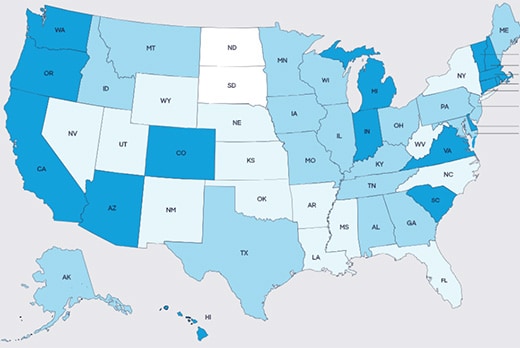Updated: Mar 12, 2024
Article highlights
- Most students qualify for some form of federal financial aid for school.
- Schools use the FAFSA to determine financial aid eligibility.
- To increase your chances, submit your FAFSA as early as possible. Financial aid is awarded on a first-come, first-served basis so apply early.
Applying to college can feel like entering the unknown. Not only do you not know which school you’ll attend in a year, but you also don’t know how much you’ll pay to attend. That’s because the tuition published by schools is often different from what students end up paying after financial aid and scholarships. Students generally know how much they’ll pay for their dream school when they receive their financial aid offer.
That’s why many parents and students wonder: How much financial aid will we qualify for? You will know the exact details when you start receiving your award letters. Understanding your FAFSA (Free Application for Federal Student Aid) eligibility for financial aid and how to qualify for it can help you prepare—and maybe even maximize your award, too.
How does FAFSA eligibility work?
The government has a set of criteria to determine who is eligible for financial aid. In addition to demonstrating financial need, you must:
- Be a US citizen or eligible noncitizen
- Have a valid Social Security number
- Show that you’re eligible for a college or career school program (a high school diploma or GED will satisfy this requirement)
To receive (and continue to receive) funds, you must be enrolled or accepted as a degree-pursuing student in an eligible school or program, stay enrolled at least half-time, and maintain satisfactory progress toward your degree as determined by your school.
In some situations, like for students with intellectual disabilities or a criminal conviction, there may be additional requirements.
How to qualify for federal student aid
If you meet the eligibility requirements, the next step is demonstrating financial need. The key to this process is filling out the FAFSA. Colleges and universities use the information from your FAFSA to calculate how much student aid you are eligible for. They also use it to determine eligibility for grants, scholarships, work-study awards, state and institutional aid, and federal student loans. Financial need is based on financial information from two years ago and is calculated by subtracting your Student Aid Index (SAI) from the Cost of Attendance (COA).
Financially speaking, a lot can happen in two years. If your situation is different now, you can contact the financial aid offices of the schools you’ve applied to and share any new financial information that may impact your aid—like a parent losing a job or your family being hit with unexpected medical bills.
How to maximize your chances of getting enough financial aid
The FAFSA is free to file. For the best chance to receive the most aid, apply early and cast a wide net as schools award funds on a first-come, first-served basis. So even though the deadline may not be until spring, it’s important to fill out the FAFSA as soon as it becomes available (October 1 of each year) and submit it promptly. Here are some other things to keep in mind:
- You don’t need to know where you’re applying to submit the FAFSA: Just list any schools you are considering. If you don’t apply to them, you can take them off your list and add new ones in their place. It’s also a good idea to apply to several schools, including private schools. Though private schools typically have higher tuition than public schools, they may be able to offer more generous aid packages.
- You may also need to complete the CSS Profile®: This is an online application used to determine eligibility for non-federal financial aid at hundreds of colleges. Like the FAFSA, you should aim to complete it as soon as you can after it becomes available on October 1. Also like the FAFSA, you do not need to have a finalized list of schools to send the CSS Profile to. Choose the schools that are likely on your list and add to them later if you need to. The CSS Profile has a fee for each application and report you send. Families who have an adjusted gross income under $100,000 can apply for a fee waiver.
- You should also continue researching and applying for scholarships since they provide free money you don’t have to pay back. Just keep in mind that scholarships may affect your financial aid package. If you receive more than $300 in scholarship money, let your financial aid office know.
What happens next?
After you’ve completed the FAFSA and the CSS Profile (if needed), applied to schools, and received acceptances, you’ll receive financial aid award letters. Compare your award letters side by side to see what different schools will cost you—and what you’ll still need to cover for each one. Scholarships often have rolling deadlines, so you can continue to apply for scholarships before and during college.
If you’re surprised by your aid package, and believe you should have qualified for more, you can try to appeal your award. If you didn’t get enough in financial aid, there are options to help you fill in the gaps, including scholarships and private student loans.
FAFSA® is a registered trademark of the US Department of Education and is not affiliated with Discover® Student Loans.
CSS Profile® is a trademark registered by the College Board, which is not affiliated with, and does not endorse, this site.











